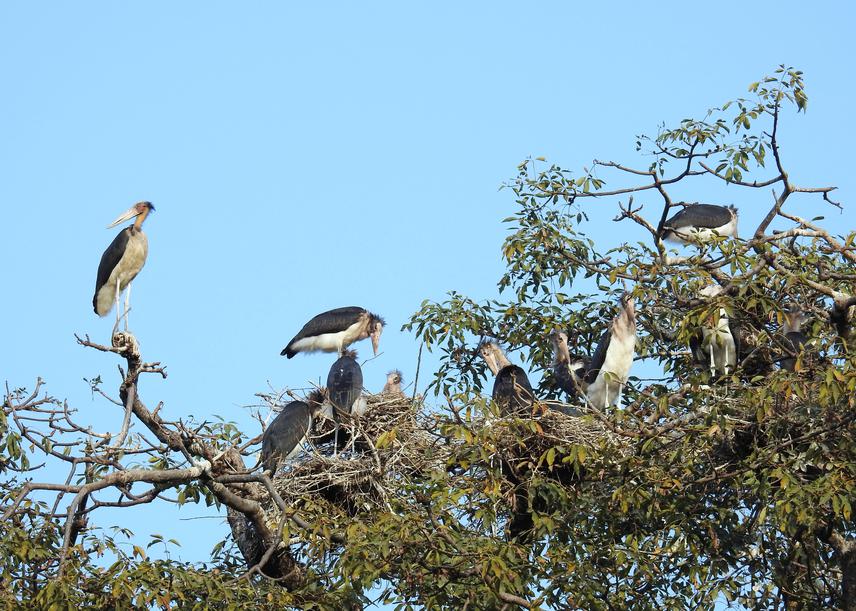Hem Bahadur Katuwal
Other projects
4 Sep 2018
Conservation Attitudes of Farmers towards Farmland Birds and Conservation Education Programmes in Lowland Nepal
Lesser Adjutant (Leptoptilos javanicus) is a globally threatened farmland bird, sparsely distributed in south and south-east Asia, and its population is declining rapidly in its range due to anthropogenic activities. The main aim of the study is to know the distribution, breeding sites and habitat requirements in lowland Nepal. Also, the project focuses to understand the ecological knowledge and attitudes of people towards the species and perform community and school awareness programs to minimize the existing anthropogenic threats and aware people about the ecology of the species. The findings of the study will help the government and conservation agencies to develop site-specific long-term plans and policies for Lesser Adjutant conservation in human-dominated landscapes of lowland Nepal.

A colony of Lesser Adjutant with fledging-stage chicks
Lesser Adjutant (Leptoptilos javanicus) is a globally and nationally threatened farmland bird found in lowland Nepal (elevation < 300 m). Although it is distributed within the south and southeast Asia, it breeds in fewer places within these countries (BirdLife International 2017). There are few studies in Lesser Adjutant in Nepal and also in the south and south-east Asia. The available studies show that Lesser Adjutant is suffering serious threats from haphazard urbanization, tree felling, hunting and habitat fragmentation and degradation (Karki and Thapa 2013, Inskipp et al. 2016). Therefore, there is a need of exploring the breeding sites, nesting tree characteristics and anthropogefic threats in wider landscape for Lesser Adjutant conservation.
The main objectives of my project are to 1) understand and explore the distribution range, and potential breeding sites, 2) identify the factors affecting the nest-sites selection, and breeding success and, 3) understand ecological knowledge and attitudes of people on its distribution, identification, conservation status, and threats, and finally 4) conduct conservation outreach programs to the people and school children about identification, conservation status, importance of the species and existing threats. The study will be carried out in 7 districts of eastern, central and western lowland Nepal. Foraging of the Lesser Adjutant in farmlands and wetlands has been recorded in all the chosen districts. I will use extensive road surveys in the study sites for locating the nesting sites (Sundar et al. 2016), measure nesting tree characteristics (e.g. tree species, height and diameter at breast height) and other habitat features (e.g. land use) associated with it and perform semi-structured interviews to know people’s knowledge and attitudes. I will also print posters of the species for conducting awareness activities.
Finally, the outcome of the project will help to understand how this species can be co-existed in human-dominated agricultural landscapes and support government and other conservation organisations for formulating site-specific plans and policies for Lesser Adjutant conservation in lowland Nepal.